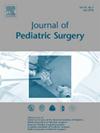Bleomycin electrosclerotherapy (BEST) of slow-flow vascular malformations (SFVMs) in children
IF 2.5
2区 医学
Q1 PEDIATRICS
引用次数: 0
Abstract
Rationale and objectives
Bleomycin electrosclerotherapy (BEST) is a promising treatment for slow-flow vascular malformations (SFVMs). Due to limited paediatric data, this study aimed to assess the safety, effectiveness, and patient-reported outcomes of BEST in children with SFVMs.
Material and methods
This monocenter cohort study included patients <18 years with symptomatic SFVMs treated by BEST. Patient records were analysed for procedural details and complications. Symptom severity was objectively classified before and after BEST. A treatment-specific, patient-reported questionnaire assessed mobility, aesthetic concerns, swelling, social participation, pain using a visual analogue scale (VAS), and post-procedural skin discoloration. Outcomes were compared between simple and infiltrative lesions.
Results
Overall, 68 BEST sessions were performed in 45 children. Total complication rate was 10/68 (14.7 %), most commonly pes equinus deformities (5/68, 7.4 %) after treating SFVMs in calf muscles. Physician-rated overall symptom severity improved significantly (p < 0.001). Treatment-specific, patient-reported questionnaire revealed improved mobility in 14/41 (34.1 %) and symptom-free patients in 10/41 (24.4 %). Outcome in both aesthetic measure and social participation was mostly rated as improved or perfect (33/41, 80.5 %; 35/41, 85.4 %). Median VAS pain scale improved significantly (2.0 vs. 0.0, p < 0.001). Postprocedural swelling occurred in all children, in 26/41 cases (64.4 %) persisting for 2–4 weeks. Postprocedural skin discoloration (41/41, 100 %) was mostly (25/41, 61.0 %) reported to fade over time. No differences between simple and infiltrative lesions were revealed in all outcome parameters.
Conclusion
BEST is effective for paediatric SFVMs by objective and subjective measures while maintaining low complication rates. Notably, BEST achieves therapeutic success even in infiltrative SFVMs expanding the range of available treatment options.
博来霉素电硬化治疗儿童慢血流血管畸形(sfvm)。
理由和目的:博来霉素电硬化疗法(BEST)是治疗慢流血管畸形(sfvm)的一种很有前途的方法。由于儿科数据有限,本研究旨在评估BEST在sfvm儿童中的安全性、有效性和患者报告的结局。材料和方法:这项单中心队列研究纳入了患者。结果:总体而言,45名儿童进行了68次BEST治疗。总并发症发生率为10/68(14.7%),最常见的是马蹄畸形(5/68,7.4%)。医生评定的总体症状严重程度显著改善(p结论:通过客观和主观测量,BEST对儿科sfvm有效,同时保持低并发症发生率。值得注意的是,BEST甚至在浸润性sfvm中也取得了治疗成功,扩大了可用治疗选择的范围。
本文章由计算机程序翻译,如有差异,请以英文原文为准。
求助全文
约1分钟内获得全文
求助全文
来源期刊
CiteScore
1.10
自引率
12.50%
发文量
569
审稿时长
38 days
期刊介绍:
The journal presents original contributions as well as a complete international abstracts section and other special departments to provide the most current source of information and references in pediatric surgery. The journal is based on the need to improve the surgical care of infants and children, not only through advances in physiology, pathology and surgical techniques, but also by attention to the unique emotional and physical needs of the young patient.

 求助内容:
求助内容: 应助结果提醒方式:
应助结果提醒方式:


